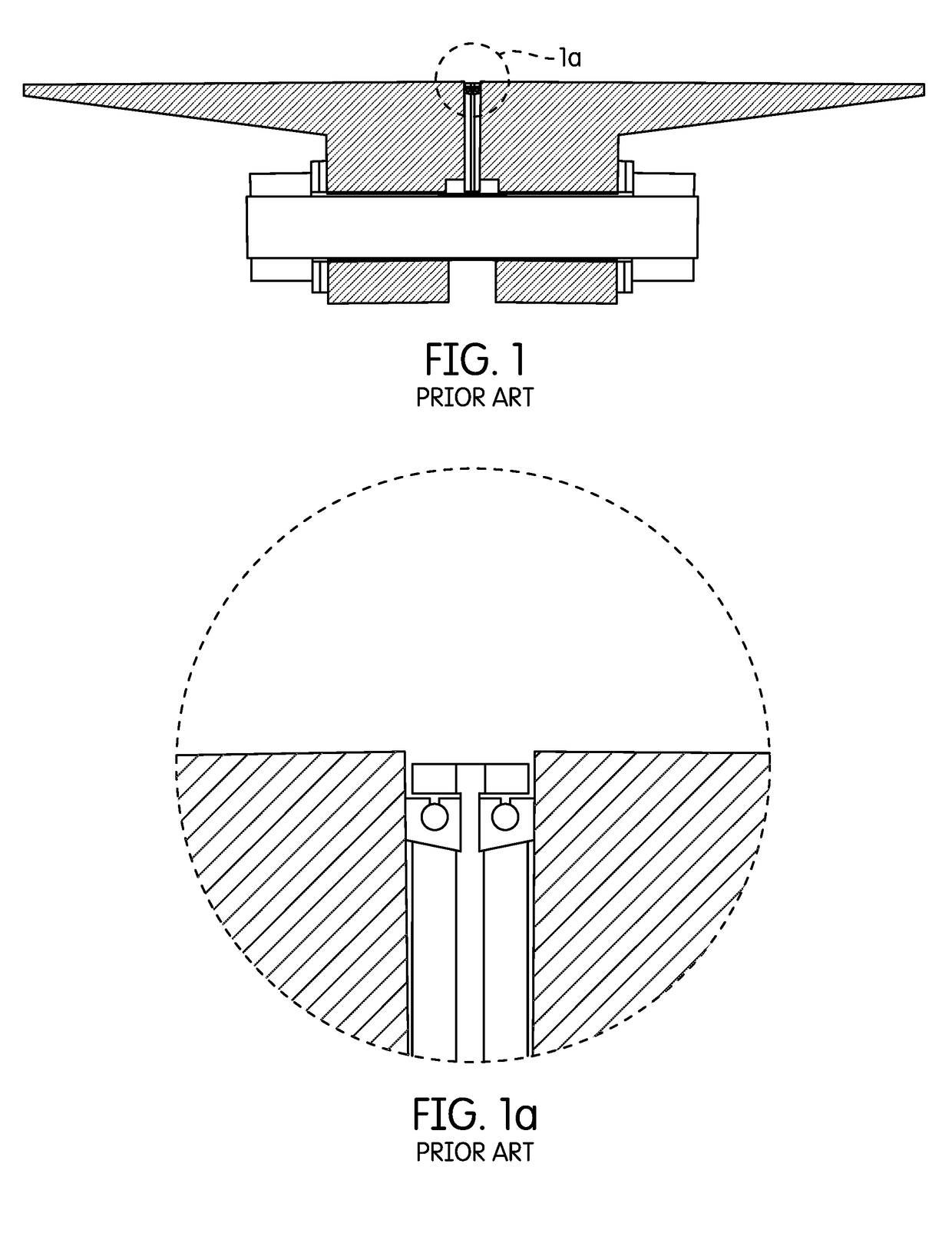Non-metallic high pressure high temperature high chemical compatibility flange isolation gasket
a flange isolation and high temperature technology, applied in the direction of flanged joints, other domestic objects, mechanical equipment, etc., can solve the problems of posing a substantial risk to human life, and limiting the width of currently available sealing elements
- Summary
- Abstract
- Description
- Claims
- Application Information
AI Technical Summary
Benefits of technology
Problems solved by technology
Method used
Image
Examples
first embodiment
[0079]the non-metallic flange isolation gasket kit comprises of a retainer (100), a seal (120), and a seal pre-load structural ring (140). The retainer (100) is precision machined from a reinforced resin material that provides high pressure, high temperature, and high chemical compatibility with increased electrical isolation properties. For example, the retainer may be precision machined from washer-shaped slices of cured filament wound material (91) or cured convolute wrapped pre-preg material (92). The seal pre-load structural ring (140) is inserted into the seal (120), and the seal outer diameter surface (122) is joined to the retainer inner diameter surface (116). Flange rotation is decreased by having the upper and lower surfaces of the retainer (100) be tapered.
second embodiment
[0080]the non-metallic flange isolation gasket kit comprises of a composite gasket blank (160) and a seal pre-load structural ring (140). The composite gasket blank (160) comprises of a retainer (100) and a seal (120). The composite gasket blank (160) is made through a composite winding / wrapping process, where tube shape compression molded fluoropolymer (350) is over molded with one or more layers of impregnated composite fiber filaments (303) and one or more layers of semi-cured impregnated composite fabric matrix (326). This material is then cured and cut. The seal (120) is machined from the tube shape compression molded fluoropolymer (350) section of the composite gasket blank (160). The retainer (100) is machined from the cured filament wound material (91) and cured convolute wrapped pre-preg material (92) section of the composite gasket blank (160). The seal outer diameter surface (122) and the retainer inner diameter surface (116) are joined by thermal fusion bonding.
[0081]The...
PUM
| Property | Measurement | Unit |
|---|---|---|
| temperature | aaaaa | aaaaa |
| operating temperatures | aaaaa | aaaaa |
| operating temperatures | aaaaa | aaaaa |
Abstract
Description
Claims
Application Information
 Login to View More
Login to View More - R&D
- Intellectual Property
- Life Sciences
- Materials
- Tech Scout
- Unparalleled Data Quality
- Higher Quality Content
- 60% Fewer Hallucinations
Browse by: Latest US Patents, China's latest patents, Technical Efficacy Thesaurus, Application Domain, Technology Topic, Popular Technical Reports.
© 2025 PatSnap. All rights reserved.Legal|Privacy policy|Modern Slavery Act Transparency Statement|Sitemap|About US| Contact US: help@patsnap.com



